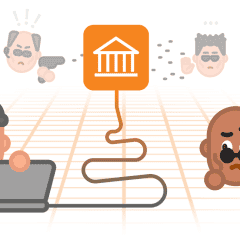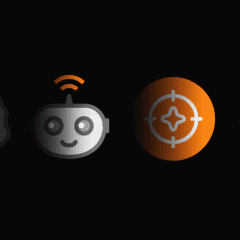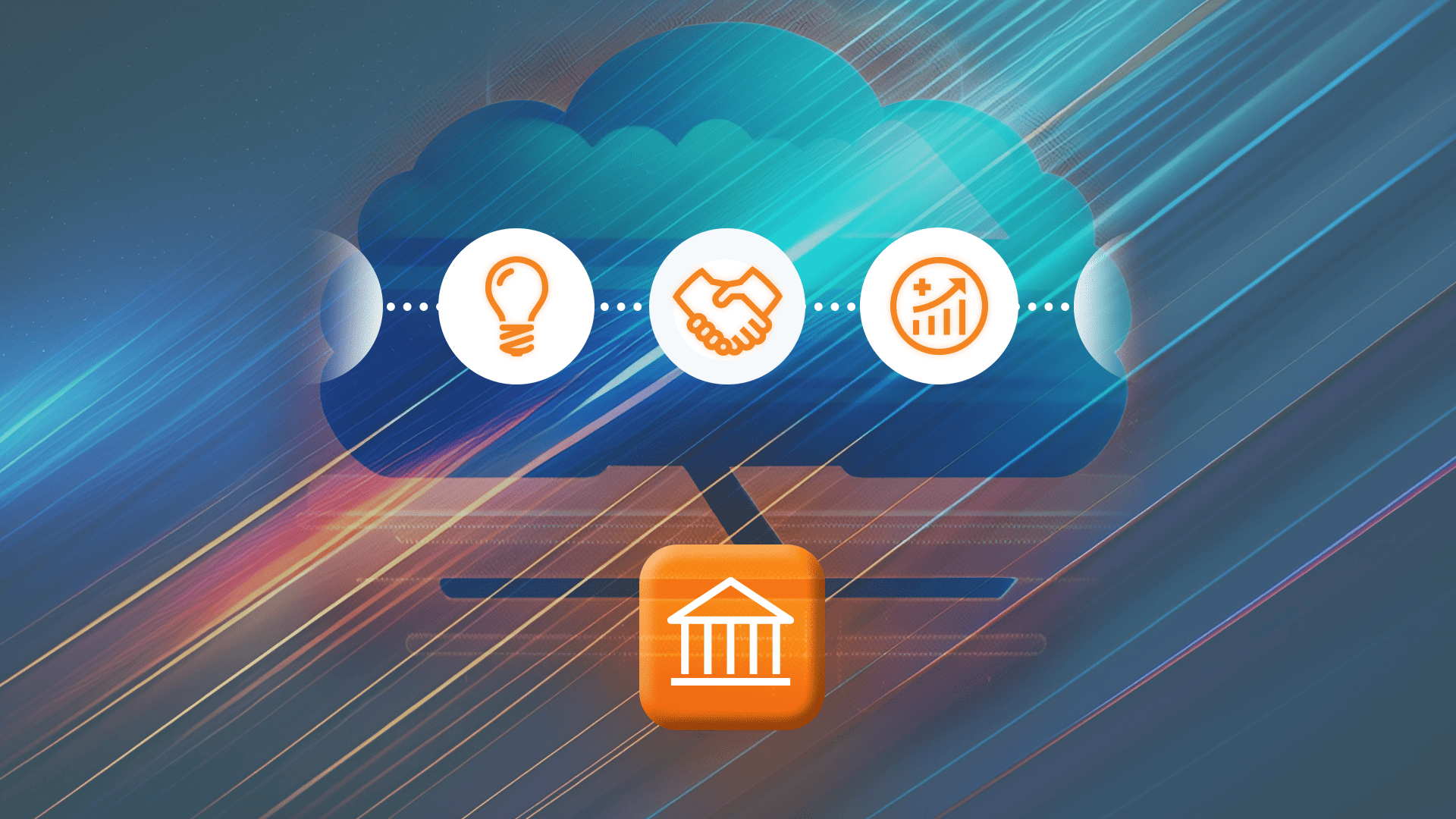Welcome to the CPaaS (communications platform as a service) hype! 😂 First things first: why are we writing about selecting CPaaS? Various analysts have forcasted threefold growth for the CPaaS industry within five years. Market estimates vary from $14 billion by 2025 to $17.7 billion in 2024. That’s huge.
Telecommunications is a very specialized and investment-intense industry. The entry barriers have (pre-CPaaS) been fairly high. That’s why there aren’t “a gazillion” potential players (unlike with bitcoin or AI) to track. This relative stability means huge M&A potential, with some early entrants and their technologies being acquired several times already (hello, Nexmo). And each turnaround involves larger and larger 🐟 “fish in the pond.”
At PortaOne, we’ve been watching CPaaS since Twilio and its early inception. And, let’s be frank: our attitude evolutionized from “oh, it’s just another glorified contact center” to “ok, let’s jump in and make some money.” PortaOne has survived many “next big things” in telecom: VoIP calling cards, cloud telephony, and on and on. So we’ll (probably) stay the course through the current CPaaS hype too. Still, we plans to muscle up our presence for companies thinking about selecting CPaaS, and we think PortaSwitch has features that make it unique in this field. After all, API-driven customization of the communications stack is precisely what we’re good at.
How and Why Did CPaaS Come to Be?
If you need the extended version of this story (spoiler alert: it’s veeery detailed and begins with 🕊carrier pigeons in the year 300 AD), have a look at this infographic. Sadly, we still don’t know who coined the term CPaaS. But we do know that John Koenig forged SaaS (software as a service). That is an older cousin of CPaaS.
We already mentioned that CPaaS has roots in Twilio, and we’re going to get back to that company again in our next post. But for now, here are a few quick facts. Twilio was launched in 2008 as a joke. Dave McClure, an early investor in Twilio, used its voice calling API to RickRoll Mike Arrington, the founder of TechCrunch. The rest wasn’t a joke. Twilio posted $1.76 billion in revenue in 2021.
In Comes Amazon
In 2006, two years before the Twilio founders and early investors started RickRolling innocent Silicon Valley chief editors, another significant development was occurring. Amazon Web Services started offering cloud computing. With Amazon’s ambition in PaaS and Twilio’s ambition in CPaaS, the two companies were destined to bump into each other. And indeed, that’s what happened.
By 2015, Amazon had invested in Twilio and signed a long-term partnership deal. Interestingly (and pathetically), while boasting of Twilio’s success story as a happy customer out of one side of its mouth, Amazon was launching its competing Connect platform with the other. That launch took place in 2017.
UCaaS As the Younger Bud (and Rival Sibling) of CPaaS
If SaaS is the older bro, then, for CPaaS, UCaaS is that nasty little brat whom your parents say you always have to take along with you. Still, understanding UCaaS from the market perspective will help you better understand (and select) CPaaS. And, yes, if a snappy “pick the right aaS” line just came into your head, then keep in mind that Margaret Joy, writing for Onsip (now part of Intrado), already made that joke.
Meanwhile, unified communications as a service is a related SaaS concept. However, while CPaaS solutions make the immense promise of “enabling developers to do anything” with the communications stack, UCaaS takes the opposite approach. It caters to those who went to business school because computer science required too much math. CPaaS allows you to integrate the communications stack into your favorite apps (CRM, CMS, etc.). UCaaS provides you with the unified communications stack and (in a perfect use case scenario) some ready-to-use tools to integrate it with your apps.
Andriy Zhylenko, CEO of PortaOne, compares UCaaS to a conventional restaurant and CPaaS to those delivery services like Blue Apron that bring a box of fresh prepped ingredients to your door so you can easily make the recipe yourself. “Selecting CPaaS enables you to experiment with the various off-the-menu dishes in telecom,” he says.
… With Even Bigger Market Growth Projections
Remember those multi-billion-dollar projections for CPaaS we told you about? Well, UCaaS is even more significant, with the rosiest estimates giving this market almost $70 billion by 2028. It’s so big and so lucrative that even Apple decided to jump on the bandwagon, with a B2B facelift for its FaceTime.
But UCaaS has a few stronger, established players: Zoom, Microsoft Teams, and Slack. Plus, there are also many other “classic” UCaaS providers: RingCentral, Nextiva, 8×8, Mitel, and others. So will there be a definitive winner in this battle of business philosophies? That’s very unlikely: both CPaaS and UCaaS have their best-shining use case scenarios.
Why Are More Businesses Selecting CPaaS?
Like with any complex phenomenon, there is a multitude of reasons explaining the growth of CPaaS. And the primary among them is…
COVID🦠
The pandemic brought in work-from-home and hybrid work, and it accelerated the digitalization. The lockdown and the rise of the WFH lifestyle drove up demand for remote communications. While this growth boosted both the UCaaS and the CPaaS segments, CPaaS initially benefited more. Many large businesses opted for the flexibility of CPaaS, while small and medium enterprises (the usual UCaaS clients) just didn’t have the same budgets available for digital transformation at the time.
In 2021 the situation started changing as more ready-to-use UCaaS solutions evolved. Meanwhile, the SME customer segment had started regrouping and recovering from the COVID impact, with the help of various government economic growth programs. Now, both business models are benefiting from the growth.
And one massive common trend that took off during lockdown is the dramatic improvement of digital communications in healthcare. We all saw exponential growth in virtual waiting rooms, digital public pill dispensers (hello, IoT), and more. By 2028, the telemedicine market is estimated to reach $636 billion. That’s several times more than the entire CPaaS and UCaaS markets together!
A More Flexible and Customized Communications Stack
Another natural consequence behind the growth in selecting CPaaS was the Zoom boom of spring 2020. After discovering the perks (and perils) of remote communication via collaboration apps, businesses started looking for more customization through new ways of replacing their traditional sales and support instruments. We’ve already written on the flexibility of CPaaS here, and so have others.
The Huge Commercial Potential of Cloud Contact Center Technology
This is a massive driver behind businesses selecting CPaaS – and we can see that change occurring in real time. The contact center as a service (or CCaaS) business model was pioneered by Genesys in the 2000s. Interestingly, Alec Miloslavsky and Greg Shenkman – the founders of Genesys – come from the 1980s wave of Soviet-Jewish emigres to California. One of the company’s critical R&D facilities is located in Kyiv, Ukraine (which means engineers from PortaOne and Genesys can have coffee together from time to time). In 1999, Alcatel acquired Genesys, launching an M&A spree that was still ongoing as recently as 2016. Genesys still leads the “magic quadrant” for CCaaS as of 2021.
After the lockdown, many call center employees simply did not return to the office, as businesses discovered that WFH can do miracles (when managed wisely). As David Michels recently wrote for Nojitter: “The contact center has become an intangible concept. We can no longer think of it as a place, a channel, a liability/cost, or even a department. It’s a concept that recognizes the tremendous value derived from handling and analyzing interactions.”
By Selecting CPaaS, Business Owners Maintain the Feeling of Control
This last reason why business owners are selecting CPaaS should have been first. But we put it here to avoid scaring our readers too much right off the top. Here’s the truth: we, the business owners, are (undoubtedly) control freaks. And digital technology has created unparalleled opportunities for control freaking via AI/ML-assisted analytics, control panels, business intelligence tools, CRM integrations, call recordings, transcripts, and so on and so on.
No matter how good the UCaaS solution – or Zoom, Slack, Teams, you name it – there will always be some “black box” that you have to trust. A proprietary code. A cloud integration. Something. CPaaS, however, is trustless. You can select as many ingredients for your dish as you want.
Who Are the Key Players in CPaaS?
Disclaimer: what follows is by no means comprehensive. We’re just highlighting the folks that had an important role in the origins of CPaaS and offering our view on the categorization of the current players. We’ve had to leave out many decent and bright teams. If we hadn’t, this blog post would have turned into a treatise.
…and Which Players Are Not CPaaS?
Since Homer and Plato, apophatic definitions have been a powerful tool for defining and categorizing. So, let’s start our categorization by defining what CPaaS isn’t.
Collaboration Apps
Zoom, Microsoft Teams, Slack, Google Meet, and Loom are great collaboration and remote communication tools. However, they lack the customization that CPaaS can provide. Although Microsoft is still present in CPaaS via its Azure Communication Services, we’ve already covered Teams Phone and Microsoft’s ambitions for CPaaS in a separate story.
Conventional Telecom Vendors
CPaaS was always lucrative to Ericsson, Huawei, and other conventional PSTN telco equipment vendors. So far, only Sweden-based Ericsson figured out their way to the field: by paying $6.2 billion for Vonage in November 2021. According to TechCrunch (yes, the same TC whose founder was rickrolled by Twilio 14 years ago), “With Vonage [Ericsson] not only gets the technology portfolio – it gets a healthy business that generated $1.4 billion [last FY]. It also gets access to […] more than 1 million registered developers.”
Cisco, another big conventional vendor, was remotely related to CPaaS via BroadSoft – a company it acquired in 2018. BroadSoft announced their eCommerce-enabled marketplace for communications applications back in 2009, as a response to Twilio’s initial success. But nothing has been heard from this marketplace since the Cisco acquisition.
“Cloud Native” Platforms
To move on to who is from who isn’t, let’s start with the two key CPaaS platforms that created this business model. These companies have now been the key enablers behind it for over a decade now.
Twilio
Twilio grew tremendously since launching that RickRolling joke. In 2016, the company completed an IPO with somewhat controversial outcomes. Twilio’s platform evangelism had become known far beyond the telecom industry. But currently (as is the case for many visionary companies) Twilio is struggling through a huge growth crisis. We are not stock analysts, but it seems likely that Twilio will be acquired by a larger player soon.
Despite these corporate struggles, the Twilio product portfolio is growing. In summer 2021, Twilio launched the public beta of Frontline – a mobile app aimed exactly at shortcomings related to the “we can’t wait to see what you build” mentality. Frontline offers a prefubrished application to create and manage customer relations.
Nexmo > Vonage > Ericsson
Tony Jamous (CEO) and Eric Nadalin (CTO) founded Nexmo two years after Twilio, in August 2010. It was originally dubbed “the No. 2” and enjoyed being in that position. While Twilio’s original focus was its voice API and the US market, Nexmo’s key differentiators were international customers and programmable texting. According to Zeus Kerravala, “two-thirds of Nexmo’s revenue came from outside the US.”
Then, in May 2016, Vonage – another big name in VoIP – acquired Nexmo. After that acquisition, Nexmo became the Vonage API Platform. The new parent started positioning Nexmo as “the new No. 1” (not “eternal No. 2”) against Twilio. Aiding the battle was TokBox and its OpenTok platform, which provided an API for in-app programmable video via WebRTC. (We already covered this technology and our solution WebTrit.) By 2020, the battle with Twilio started showing the first signs of victory.
The success of the Vonage+Nexmo CPaaS platform didn’t go unnoticed. In November 2021, Ericsson acquired Vonage for $6.2 billion (think back to the section above on conventional vendors). Here’s a good article with the analysis of this acquisition. We’re getting our 🍿popcorn to see the Vonage acquisition drama evolve in 2022.
Your Selecting CPaaS Journey – To Be Continued
This ecosystem saga will continue in Part Two. You’ll hear the story of how Amazon launched a competitor to Twilio, how Microsoft combined everything it could to deliver a strong CPaaS offering, the (almost soap opera) story of Princess Avaya, and Elon Musk – whose Starlink satellites also (for some reason) have something to do with selecting CPaaS properly.











